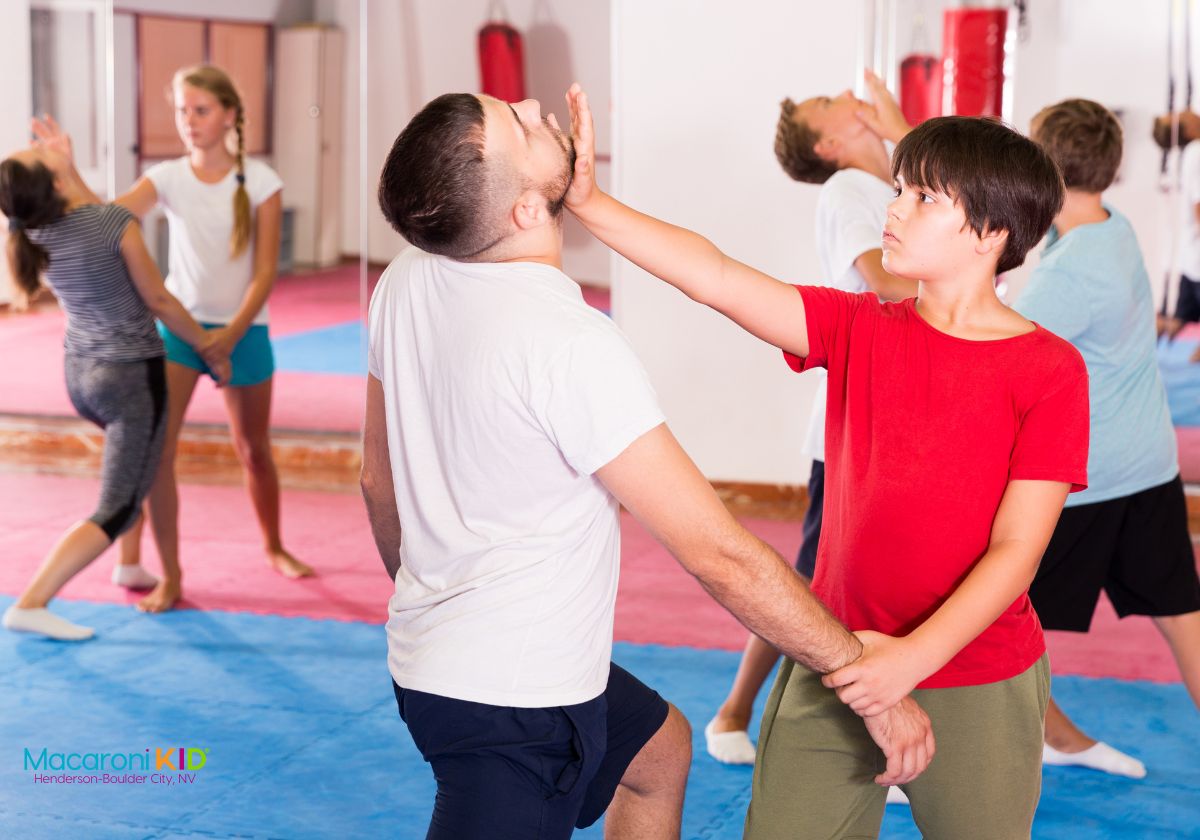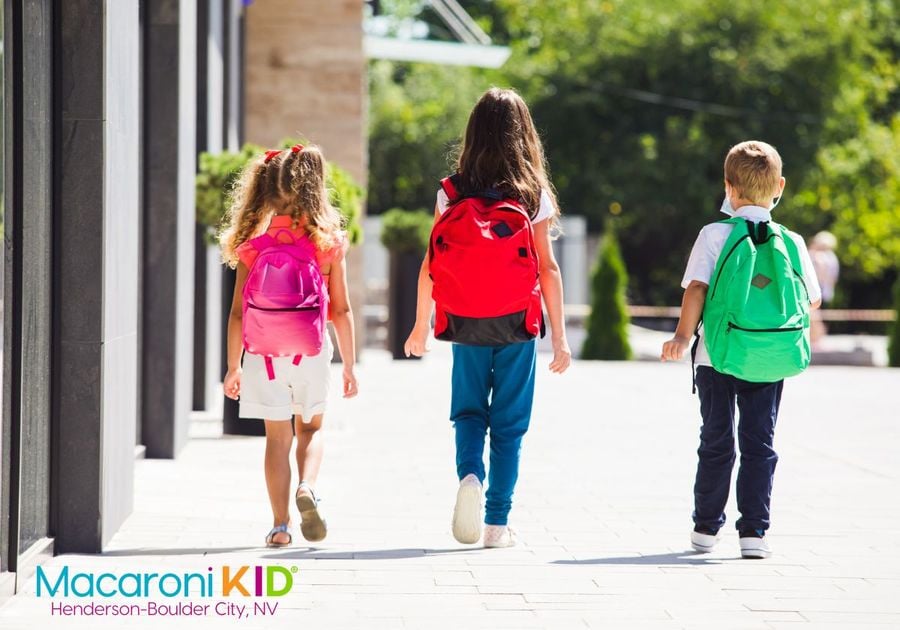Our number one job as parents is to keep our kids safe. They stay with us or another trusted adult while they are young so they don't really have to think about keeping themselves safe. We teach them the basics. Don't touch fire. Don't talk to strangers. Look both ways before crossing the street. For the most part, they stay under our watchful eye. What about when they get older and have more responsibilities? What if they have to walk home from school? How about when they go hang out with their friends at the mall? (If kids still do that kind of thing)
Any number of things can happen while they are on their own. The big scary things are kidnappers and violent crimes. Without getting too graphic on the horrible facts, simply said, every 2 minutes a child is trafficked in the US. I want my kids to know how to get to safety.
Aside from the "big bads", a kid can run into the school bully who wants to choose violence. Without a responsible adult around to intervene, I want my kids to know to defend themselves.
Accidents can happen, I want my kids to know what to do in an emergency. They get plenty of drills at school for emergency situations, but bad things can happen anywhere.
One of the most basic things a child can learn is your contact info. These days, parents have different numbers with cell phones. Both my kids were given the task in school to learn my phone number and address. If yours haven't done that yet, that's a good place to start. Even if little ones find themselves lost, it can be a big help for them to be able to give your number so someone can contact you.
When my kids got to the point where they had to stay home, we had to think of ways they can contact us or emergency services, if needed. Rarely does any home have a landline nowadays. Devices are throughout the house. Tablets can be connected with Facebook messenger. Kids don't have to have a Facebook account. They can send messages that way. Just as good as sending a text. There's a voice button if they can't type yet. Devices like the Google Home have a video call feature. If your home has a security system, there are emergency buttons linked to them. Teaching kids all the ways they can reach out will help them in a crisis.
Here are a few ways kids can stay safe and protect themselves:
1. When out alone, stay in populated areas:
If a kid needs to be out on their own, they should be in an area they are very familiar with. Use location apps on phones to help track them. When walking to and from school, they should practice the route ahead of time with a trusted adult. Looking for potential hazards along the way so they can be aware. Note crosswalks and the traffic that can build up. Safe crossing spots. Businesses in the area they can go to when in need of some help. There is safety in numbers so if they can, buddy up walking with friends. Make sure they know to stay aware and not use things like earbuds that can hinder their ability to hear potential danger.
If they hang out with friends somewhere, make sure they know how to find employees that can help. Have a planned pick up spot and time. They should examine their surroundings and know their exits in case of emergency. Not talking to strangers is still vital when they are older. They should feel comfortable saying no loud and clear if they feel they are in danger.
|
2. Online Safety
The web is a necessary thing. With all the good, there is plenty of bad. Bad people have an easy way to access anyone they want. It can't be avoided but teaching kids how to be safe online is key. Most importantly, do not meet anyone in person! Parents should do want they can to be aware of what their kids do online. Sneaky is sneaky, they can find a way. Here's some tips for kids to remember:
- Stay private-don't use your real name where anyone can see it, don't share your age or location, don't share any other personal info like your phone number, where you go to school, or where you will be at any given point. Ask parents for permission to set up any accounts and make sure they have access if they need it. Set privacy settings on accounts to just friends and family.
- Don't have personal conversations with anyone you don't know. Don't give your information or pictures to strangers online. Predators are very good at making you comfortable enough to share with them. Don't give them that opening to do so. If a stranger is trying to contact you, tell a parent. Account settings may need to be changed or cancelled altogether.
- The internet makes people feel bold. Without a face, bullies feel empowered to say what they want. Don't engage in interactions with a bully. If someone is starting to get rude or mean, cut off communication. They may need to be reported, depending on the level of aggression. Be careful what you say online, also. Even though it may seem harmless, things said can have lasting effects. Real-life occurrences can happen.
- Guard your passwords. Don't make them too easy to guess. Don't tell anyone what they are, aside from parents. You don't want anyone hacking your account and getting to private information or using your account to do bad things.
- If you decide to share pictures, be mindful of what is in them. Keep them appropriate. Make sure there is no identifying factors in the background, like your house number or names of places where someone might be able to find you. Make sure other people are ok if you are sharing pictures of them.
3. Learning Self Defense
Look around for self defense classes for kids and teens. In these classes, they learn what should signal them to defend themselves. Techniques that can help them escape someone trying to hurt them. What to say and do in each situation. You can kick it up a notch by enrolling in various martial arts programs and get more extensive training. One of the most important things they learn is when to use those techniques.
Search YouTube for videos on self defense for kids and teens. Break out the couch cushions and have a punching party. Run some exercise drills where they can increase their agility and speed. The more physical practice they get, the more muscle memory will kick in when they need it most.
Here are some simple self defense techniques to teach kids:
- Proper punching. Make sure they know how to make fist with the thumb on the outside so they don't hurt themselves. Using a solid punch on those soft spots like eyes, throat, groin and knees may be all they need to simply break contact and run away to safety. Stomping is also effective for little ones since they not be tall enough to cause other damage. Stomp on their foot to hinder them enough for escape.
- Biting and screaming is ok. Normally we tell them to stop and it's bad behavior. Stranger danger is one time when it's ok.
- Look into self defense tools that they can carry safely and use effectively. Panic alarms, collapsible batons and kubotans are non-threatening to have on hand but can be key in defending yourself. There are more extreme items are pepper spray and stun guns. Make sure they know how to be careful using these. There are gel pepper sprays that can help keep their own eyes safe, especially on windy days. If you want them to be able to have some of things at school because they walk to school, check with the school first to see what's allowed.
- Learn to be resourceful. If you don't have access to special tools, a rock or stick can be equally effective. Items you are already carrying can be used as weapons. Swing a backpack in their face. Throw your shoe at them. Most of us know the key trick. Show your kids how to hold their house key between their fingers in case they need to jab. Teaching kids where to strike can help them get away from people bigger than them.
 |
My kids safety is the most important thing to me. Of course, I would like to be there for them every minute of every day, but there is something comforting about knowing that they can take care of themselves. If they know what to expect, they can protect themselves and possibly others around them.




